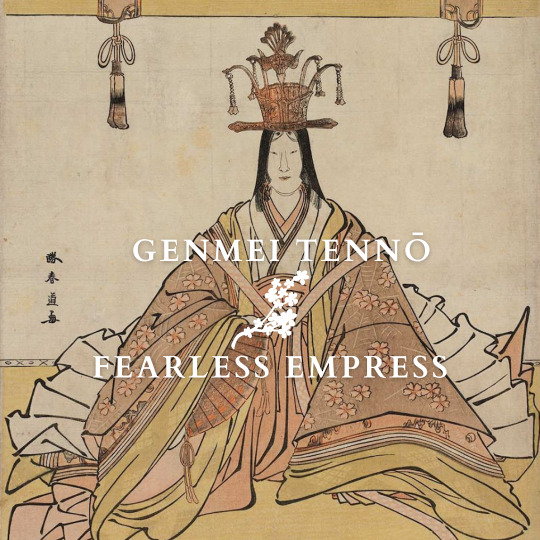Text
"There is one clear early Hellenistic example of a regnant basilissa: Amastris, who ruled Herakleia Pontika after the death of her husband, its tyrant Dionysios. She eponymously founded the neighboring city of Amastris c. 300 BCE, and from there issued coins bearing the legend “of basilissa Amastris" (ΑΜΑΣΤΡΙΟΣ ΒΑΣΙΛΙΣΣΗΣ). Like many other women ruling as monarchs, Amastris came into direct power because her husband had died and her sons were under age. She brought her own royal credentials to the situation, however, as a niece of Dareios III (daughter of his brother Oxyathres). Like Apama, Alexander had married her to one of his generals (Krateros). After 323 Krateros swapped her for Phila, and she moved to Herakleia to live with Dionysios, who, as Memnon tells us later (probably after 306), began to call himself basileus. Although supervising the regency for her sons, Amastris faced interventions by Antigonos Monophthalmos, ostensibly on the children’s behalf, to control Herakleia, and then by Lysimachos, who also married her. By 300 she was solo again with no outside interference, and her foundation of Amastris marks the point when she fully embraced the role of a regnant basilissa. Although her sons soon came of age, she maintained this role until they assassinated her c. 284."
-Gillian Ramsey, "Apama and Stratonike," "The Routledge Companion to Women and Monarchy in the Ancient Mediterranean World" (edited by Elizabeth D. Carney and Sabine Müller)
13 notes
·
View notes
Text


"Intellectually, Katharine was very much a woman of ‘the Renaissance’. It was curiously appropriate that she had been born at Alcalá de Henares, where in 1499 the most advanced university in Spain was established (La Universidad Complutense). In the years 1502–22, the university produced the celebrated ‘Polyglot Bible’, in which the Old Testament was printed in Caldean, Hebrew, Greek and Latin and the New Testament in Greek and Latin; it was one of the emblematic works of what was called ‘the New Learning’, the rediscovery of the culture and values of classical antiquity and their application to the contemporary world. Katharine knew Cardinal Francisco Jiménez de Cisneros, who had supervised the project – indeed, she had been born in his palace – and came in time to form friendships with some of the leading members of the great generation of humanist scholars who were transforming European letters – Antonio de Nebrija and Juan Luis Vives among the Spaniards; Thomas More and John Colet among the Englishmen. Indeed, Katharine was part of a generation in Spain which was learning to value women in quite a new way; as an expression of this, the University of Alcalá (like that of Salamanca) even appointed women to professorial chairs. Truly, the world was changing at an astonishing rate."
Patrick Williams, Katharine of Aragon: The Tragic Story of Henry VIII's First Unfortunate Wife
33 notes
·
View notes
Text
"[Alice Perrers] requested that she be buried in the parish church of Upminster, St Laurence, before the altar of the Virgin Mary. Alice seems to have had an affinity with Mary through her life; a seal of hers from c. 1374 shows an image of the Virgin Mary and child, her tabernacle seized in 1377 had an image of the Virgin Mary on it, and now she wished to be buried before Mary’s altar."
-Gemma Hollman, "The Queen and the Mistress: The Women of Edward III"
9 notes
·
View notes
Text
"Stratonike’s marriages in the Seleukid dynasty were further steps in experimenting with legitimacy. Her role as an Antipatrid and Antigonid basilissa brought authority in the Mediterranean sphere, just when relationships between the royal families needed to be redefined after her father’s defeat and Seleukos’ victory at Ipsos in 301. Plutarch gives the account of her marriage, how Seleukos requested Stratonike in marriage because he needed an alliance with Demetrios to counterbalance other marriage-alliances being forged by Ptolemy I. Phila joined her daughter and the two kings at Rhosos, Syria for several days of festivities before departing to handle a political dispute with her brother Kassandros, and then Seleukos helped the already polygamous Demetrios broker another marriage with Ptolemaïs, daughter of Ptolemy. Turmoil between the kings erupted almost immediately after; nevertheless it is clear that Stratonike’s first marriage fits into a complex sequence of inter-state negotiations, for which the physical and familial movements of basilissai were integral.
Stratonike’s second marriage [to her stepson Antiochus] was an experiment internal to the Seleukid family, laying the basis for the representation of dynastic cohesion and a stable succession. Setting aside the romantic reading of motivations, in purely political terms, Stratonike transferred all her weight as basilissa to Antiochos, bringing it to bear on his new responsibility for ruling the eastern Seleukid empire. This in itself is interesting: that the Seleukids at this time saw feasibility in dispatching a western basilissa to become a very successful Eastern leader. Stratonike had had [several] years already in which to grow into her role as a Seleukid dynasty founder. Her move to be with Antiochos perhaps represents the point when those years of work came to fruition for her own benefit, plus the benefit of both her husbands, and Apama too."
-Gillian Ramsey, "Apama and Stratonike: The first Seleukid basilissai," "The Routledge Companion to Women and Monarchy in the Ancient Mediterranean World" (edited by Elizabeth D. Carney and Sabine Müller)
6 notes
·
View notes
Text

A little celebratory painting in honor of Anne of Cleves' Hans Holbein portrait being cleaned
People often were not completely static sitters for their artists. They were also often played music, read to, and spoken with to help pass the time. Anne of Cleves, like many women of the era, was a fine sewist, but she may have also whiled the hours away practicing English for her prospective new husband or being taught court etiquette.
William Kay Blacklock's "The Lesson" was somewhat referenced for proper hand anatomy, as the main reference for this was the Hans Holbein portrait itself. Blacklock actually had two very similar paintings, which would have been even more useful to me had I discovered it earlier. The Second is "The Window."
Edit: Better photo
141 notes
·
View notes
Text

"Sammu-ramat was the wife of King Shamshi-Adad V (823– 811 BCE) and mother of King Adad-narari III (810– 783). Some scholars assume that she was co-regent with her son, while others doubt that she served this function. The main evidence for the assumption that she functioned as co-regent (not a clearly defined office, but a rather an ad hoc solution in a difficult situation), is a stone stele that is extraordinary in several regards:
Boundary stone of Adad-narari, king of Assyria, son of Shamshi-Adad (V), king of Assyria (and of) Semiramis, the palace-woman of Shamshi-Adad, king of Assyria, mother of Adad-narari, strong king, king of Assyria, daughter-in-law of Shamaneser (III), king of the four quarters. When Ushiplulume king of the Kummuhites, caused Adad-narari, king of Assyria (and) Semiramis, the palace woman to cross the Euphrates. I fought a pitched battle with them – with Atarshumki, son of Adramu, of the city of Arpad together with eight kings who were with him at the city Paqarahubunu. I took away from them their camp. To save their lives they dispersed. In this (same year) they erected this boundary stone […]
The first extraordinary fact is that the king mentions his mother in his genealogy, something that is completely unusual. Additionally, he states that he was accompanied by his mother while he was on a campaign, which seems a bit strange for a heroic king. These two points indicate that Sammu-ramat actually held a truly prominent role, that perhaps she herself led the military operation instead of her son Adad- narari, who might simply have been too young to rule himself.
However, as we do not have much further evidence, her co- regency will remain a matter of discussion, but the simple existence of this inscription indicates that something extraordinary was going on here.
As mentioned above, we have no evidence for later narratives that refer to a powerful warrior queen Sammu-ramat in Mesopotamia that might have inspired the creation of the Greek image of the Mesopotamian warrior queen Semiramis. Since most of our sources derive from official or even royal archives, it comes as no surprise that folk stories are not very well attested. They mainly belonged to the oral sphere and if they were written down, scribes might have used the easier Aramaic for such stories. Unfortunately, Aramaic was mostly written on papyri and parchment and these organic materials quickly deteriorated under Mesopotamian climatic conditions. Therefore, it seems very unlikely that we will ever know what inspired the Greeks when they wrote about the famous queen Semiramis, who has often been considered identical with Sammu-ramat. Actual evidence for links between the two women are as yet missing."
Fink Sebastian, "Invisible Mesopotamian royal women?", in: The Routledge companion to women and monarchy in the ancient mediterranean world
33 notes
·
View notes
Text
"As previously discussed by Mary Villeponteaux, Protestant efforts to equate female rulers with Old Testament tyrants such as Jezebel were motivated primarily by fear of their gender. The implication was that papist queens were neither compassionate nor rational, but impulsive, excessively cruel, sexually incontinent, and either stubborn or indecisive due to the unnaturalness of occupying a traditionally male position of power. During his own exile, Scotsman John Knox actively equated both Mary I of England and Mary Stuart with Jezebel, and argued that 'nature doth paint them to be weak, frail, indirect, feeble and foolish, while experience hath declared them to be unconstant, variable, cruel, and lacking the spirit of counsel.
Nick K. Crown, "Catholic, Anglican, and Puritan Representation of Royal Martyrs," pp. 26.
3 notes
·
View notes
Text

Genmei (661-721) was Japan's fourth empress regnant. She was Empress Jitō's half-sister and her match in terms of ambition and political skills. Her rule was characterized by a development of culture and innovations.
Ruling after her son
Like Jitō (645-703), Genmei was the daughter of Emperor Tenji but was born from a different mother. Jitō was both her half-sister and mother-in-law since Genmei had married the empress’ son, Prince Kusakabe (662-689). She had a son with him, Emperor Monmu (683-707).
Kusakabe died early and never reigned, which led to Jitō's enthronement. The empress was then succeeded by her grandson Monmu. The latter’s reign was short. In his last will, he called for his mother to succeed him in accordance with the “immutable law” of her father Tenji. Genmei accepted.
Steadfast and ambitious
Genmei was made from the same mold as her half-sister. She proved to be a fearless sovereign, undeterred by military crises.
She pursued Jitō's policies, strengthening the central administration and keeping the power in imperial hands. Among her decisions were the proscription of runaway peasants and the restriction of private ownership of mountain and field properties by the nobility and Buddhist temples.
Another of her achievements was transferring the capital at Heijō-kyō (Nara) in 710, turning it into an unprecedented cultural and political center. Her rule saw many innovations. Among them were the first attempt to replace the barter system with the Wadō copper coins, new techniques for making brocade twills and dyeing and the settlement of experimental dairy farmers.
A protector of culture
Genmei sponsored many cultural projects. The first was the Kojiki, written in 712 it told Japan’s history from mythological origins to the current rulers. In its preface, the editor Ō no Yasumaro praised the empress:
“Her Imperial Majesty…illumines the univers…Ruling in the Purple Pavillion, her virtue extends to the limit of the horses’ hoof-prints…It must be saif that her fame is greater than that of Emperor Yü and her virtue surpasses that of Emperor Tang (legendary emperors of China)”.
In 713, she ordered the local governments to collect local legends and oral traditions as well as information about the soil, weather, products and geological and zoological features. Those local gazetteers (Fudoki) were an invaluable source of Japan’s ancient tradition.
Several of Genmei’s poems are included in the Man'yōshū anthology, including a reply by one of the court ladies.
Listen to the sounds of the warriors' elbow-guards;
Our captain must be ranging the shields to drill the troops.
– Genmei Tennō
Reply:
Be not concerned, O my Sovereign;
Am I not here,
I, whom the ancestral gods endowed with life,
Next of kin to yourself
– Minabe-hime
From mother to daughter
Genmei abdicated in 715 and passed the throne to her daughter, empress Genshō (680-748) instead of her sickly grandson prince Obito. This was an unprecedented situation, making the Nara period the pinnacle of female monarchy in Japan.
Genmei would oversee state affairs until she died in 721. Before her death, she shaved her head and became a nun, becoming the first Japanese monarch to take Buddhist vows and establishing a long tradition.
Feel free to check out my Ko-Fi if you like what I do! Your support would be greatly appreciated.
Further reading
Shillony Ben-Ami, Enigma of the Emperors Sacred Subservience in Japanese History
Tsurumi Patricia E., “Japan’s early female emperors”
Aoki Michiko Y., "Jitō Tennō, the female sovereign",in: Mulhern Chieko Irie (ed.), Heroic with grace legendary women of Japan
136 notes
·
View notes
Text








Historical Indigenous Women & Figures [6]:
Queen Nanny: the leader of the 18th century Maroon community in Jamaica, she led multiple battles in guerrilla war against the British, which included freeing slaves, and raiding plantations, and then later founding the community Nanny Town. There are multiple accounts of Queen Nanny's origins, one claiming that she was of the Akan people from Ghana and escaped slavery before starting rebellions, and others that she was a free person and moved to the Blue Mountains with a community of Taino. Regardless, Queen Nanny solidified her influence among the Indigenous People of Jamaica, and is featured on a Jamaican bank note.
Karimeh Abboud: Born in Bethlehem, Palestine, Karimeh Abboud became interested in photography in 1913 after recieving a camera for her 17th birthday from her Father. Her prestige in professional photography rapidly grew and became high demand, being described as one of the "first female photographers of the Arab World", and in 1924 she described herself as "the only National Photographer".
Georgia Harris: Born to a family of traditional Catawba potters, Harris took up pottery herself, and is credited with preserving traditional Catawba pottery methods due to refusing to use more tourist friendly forms in her work, despite the traditional method being much more labour intensive. Harris spent the rest of her life preserving and passing on the traditional ways of pottery, and was a recipient of a 1997 National Heritage Fellowship awarded by the National Endowment for the Arts, which is the highest honor in the folk and traditional arts in the United States.
Nozugum: known as a folk hero of the Uyghur people, Nozugum was a historical figure in 19th century Kashgar, who joined an uprising and killed her captor before running away. While she was eventually killed after escaping, her story remains a treasured one amongst the Uyghur.
Pampenum: a Sachem of the Wangunk people in what is now called Pennsylvania, Pampenum gained ownership of her mother's land, who had previously intended to sell it to settlers. Not sharing the same plans as her mother, Pampenum attempted to keep these lands in Native control by using the colonial court system to her advantage, including forbidding her descendants from selling the land, and naming the wife of the Mohegan sachem Mahomet I as her heir. Despite that these lands were later sold, Pampenum's efforts did not go unnoticed.
Christine Quintasket: also known as "Humishima", "Mourning Dove", Quintasket was a Sylix author who is credited as being one of the first female Native American authors to write a novel featuring a female protagonist. She used her Sylix name, Humishima, as a pen name, and was inspired to become an author after reading a racist portrayal of Native Americans, & wished to refute this derogatory portrayal. Later in life, she also became active in politics, and helped her tribe to gain money that was owed them.
Rita Pitka Blumenstein: an Alaskan Yup'ik woman who's healing career started at four years old, as she was trained in traditional healing by her grandmother, and then later she became the first certified traditional doctor in Alaska and worked for the Alaska Native Tribal Health Consortium. She later passed on her knowledge to her own daughters. February 17th is known as Rita Pitka Blumenstein day in Alaska, and in 2009 she was one of 50 women inducted into the inaugural class of the Alaska Women's Hall of Fame
Olivia Ward Bush-Banks: a mixed race woman of African American and Montaukett heritage, Banks was a well known author who was a regular contributor to the the first magazine that covered Black American culture, and wrote a column for a New York publication. She wrote of both Native American, and Black American topics and issues, and helped sculptor Richmond Barthé and writer Langston Hughes get their starts during the Harlem Renaissance. She is also credited with preserving Montaukett language and folklore due to her writing in her early career.
part [1], [2], [3], [4], [5] Transphobes & any other bigots need not reblog and are not welcome on my posts.
285 notes
·
View notes
Text
"There is one clear early Hellenistic example of a regnant basilissa: Amastris, who ruled Herakleia Pontika after the death of her husband, its tyrant Dionysios. She eponymously founded the neighboring city of Amastris c. 300 BCE, and from there issued coins bearing the legend “of basilissa Amastris" (ΑΜΑΣΤΡΙΟΣ ΒΑΣΙΛΙΣΣΗΣ). Like many other women ruling as monarchs, Amastris came into direct power because her husband had died and her sons were under age. She brought her own royal credentials to the situation, however, as a niece of Dareios III (daughter of his brother Oxyathres). Like Apama, Alexander had married her to one of his generals (Krateros). After 323 Krateros swapped her for Phila, and she moved to Herakleia to live with Dionysios, who, as Memnon tells us later (probably after 306), began to call himself basileus. Although supervising the regency for her sons, Amastris faced interventions by Antigonos Monophthalmos, ostensibly on the children’s behalf, to control Herakleia, and then by Lysimachos, who also married her. By 300 she was solo again with no outside interference, and her foundation of Amastris marks the point when she fully embraced the role of a regnant basilissa. Although her sons soon came of age, she maintained this role until they assassinated her c. 284."
-Gillian Ramsey, "Apama and Stratonike," "The Routledge Companion to Women and Monarchy in the Ancient Mediterranean World" (edited by Elizabeth D. Carney and Sabine Müller)
13 notes
·
View notes
Photo




Imogen Millais-Scott in Salome’s Last Dance (1988) dir. Ken Russell
When I found out that Imogen Millais-Scott lost her sight before shooting and never worked as an actress again, I burst into tears. She’s one of the most amazing actors I’ve ever seen.
48 notes
·
View notes
Text



Gurun is one of the few lais without any supernatural dimension: instead, it is strongly marked by historical reality. If we redesignate the rulers of Brittany count and countess instead of king and queen, we immediately recognize the latter, the king of Scotland's sister, as being Margaret, sister of King William, who married Duke Conan of Brittany in 1160. Pursuing the equation, we see the Scottish monarch as William himself. Conan and Margaret were blessed with no male heir; but their daughter Constance became the wife of Geoffrey Plantagenet, who thereby inherited Brittany. Their son, the ill-fated Arthur, was thus King William's great-nephew, whereas Gurun in the lai has no direct counterpart in history.
-D.D.R. Owen, William the Lion, 1143,1214: Kingship and Culture
25 notes
·
View notes
Text




Queen Victoria's sketches of Anne Boleyn after seeing Giulia Grisi in Donizetti's Anna Bolena, 1830s.
466 notes
·
View notes
Text


Once she spent 400 denarii on a single pound of moisturiser, whose honey-and-oil base would have been enhanced by the addition of kyphi, the sweet and spicy blend of cinnamon, honey, wine and resin that was known to have a soporific effect on the body. Its distinctive aroma 'seductively brings on sleep, so that without getting drunk, the sorrows and tensions of daily anxieties are loosened and untied like tangled knots' — the perfect way to unwind at the end of a busy day.
The Egyptians had long used perfumes for ritual and political purposes, but Cleopatra was also fully aware that perfumes were most closely associated with love and sex, the domain of Hathor-Aphrodite, whose sacred flowers were myrtle and rose. This made it likely she would have selected Myrtinum, myrtle oil, or Rhodinon, rose oil. These substances were applied liberally to both skin and hair, and it was recommended so 'that your oiled tresses may not injure your splendid silk dresses, let this pin fix your twisted hair and keep it up.'
For her meeting with Antonius, Cleopatra may have left sections of her hair to fall loosely about her shoulders in the manner of Isis-Aphrodite, whose 'long thick hair fell in tapering ringlets on her lovely neck'. Cleopatra would have worn numerous pearls from her fabulous collection. Portrayed on coins with pearl-tipped hairpins to lend gleaming lustre to her hair, Cleopatra also wore a long pearl necklace wound twice, flapper-style, around her neck. - Joann Fletcher, Cleopatra the Great: The Woman Behind the Legend
215 notes
·
View notes
Text


Olivia de Havilland with friends, Columbia Screen Snapshots, Series 16, No. 1 (1936)
49 notes
·
View notes
Text




✧ "Elizabeth of York's responsibilities included acts of charity, keeping her household, and, of course, bearing heirs. As the queen of Henry Tudor, she had the additional charge of demonstrating support for him that would help unite the country and end the infighting between Lancaster and York. To this end, each appointment and gift had to be considered for the impression that it made. From the beginning of their marriage, Elizabeth accepted a submissive role, seeing it as her duty to God and country to support her husband.
Henry and Elizabeth agreed that her first concern was for children, and they were almost immediately blessed with their first. Prince Arthur was born a scant eight months after their marriage, so Elizabeth’s time as queen coincides with her time as a mother. Even before Arthur was born, she would have begun planning for his education and household. Elizabeth spent significant time directing the care of her children and participating in their life herself much more than many queens of her era. Still, her priority was Henry, and the two were seldom apart, even after separate households were set up for the children." — Samantha Wilcoxson
Jodie Comer as ELIZABETH OF YORK
in The White Princess (2017)
86 notes
·
View notes
Photo


In matters of religion, although Katherine’s personal religious leanings are not easily discerned, there is no reason to think that she was not as good a Catholic as any other. At the very least she observed the rituals of her faith, as evinced by her collection of rosaries. She also owned several religious books, mainly mass-books. Josephine Wilkinson, Katherine Howard: The Tragic Story of Henry VIII’s Fifth Queen
364 notes
·
View notes